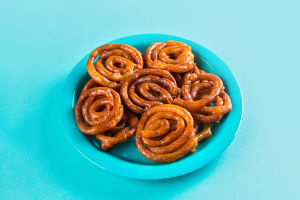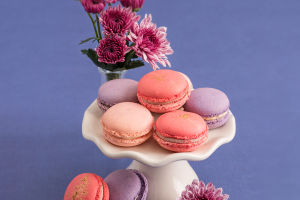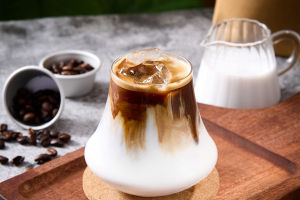Paranthas, India's beloved flatbread, come in various shapes and sizes, but none are as charming and delightful as the triangle-shaped parantha.
With its crispy edges, soft layers, and unique form, the triangle parantha is a culinary masterpiece that brings a touch of artistry to the table.
Let's explore the world of this delectable dish, its history, preparation, and the sensory experience it offers.
A Slice of History
The origins of parantha can be traced back to the Indian subcontinent, where it has been a staple in households for centuries. The triangle shape, however, adds a modern twist to this traditional favorite. While the exact origins of the triangular form are unclear, it is believed to have emerged as a way to make the parantha more aesthetically pleasing and easier to cook evenly. This shape ensures that each bite has a perfect balance of crispy and soft textures.
The Art of Making Triangle Parantha
Creating a triangle-shaped parantha is as much an art as it is a culinary skill. Here's how you can make this delightful dish at home:
Ingredients:
Whole wheat flour: 2 cups
Water: As needed
Salt: A pinch
Ghee or oil: For cooking
Instructions:
Prepare the Dough: In a mixing bowl, combine the whole wheat flour and salt. Gradually add water and knead into a smooth, pliable dough. Cover and let it rest for about 15-20 minutes.
Roll and Fold: Divide the dough into small, equal-sized balls. Take one ball and roll it into a flat, round disc using a rolling pin. Apply a thin layer of ghee or oil over the surface.
Fold into a Triangle: Fold the disc in half to form a semi-circle. Then, fold the semi-circle again to form a triangle. Roll out this triangle gently to flatten it into a larger triangle.
Cook to Perfection: Heat a tawa or griddle over medium heat. Place the rolled-out triangle on the hot surface. Cook until you see bubbles forming, then flip it over. Apply ghee or oil on both sides and cook until golden brown and crispy.
A Feast for the Senses
The triangle-shaped parantha is not just a treat for the taste buds but also a visual and olfactory delight. As it cooks on the griddle, the aroma of the ghee or oil fills the air, evoking a sense of comfort and nostalgia. The golden-brown triangles, with their crisp edges and soft, layered interior, are a sight to behold. Each bite offers a delightful contrast of textures, with the crisp exterior giving way to the soft, flavorful layers within.
Pairing Perfection
Triangle paranthas are incredibly versatile and can be enjoyed with a variety of accompaniments. Here are some delicious pairings:
Aloo Subzi: Spiced potato curry that complements the parantha's flavors perfectly.
Curd: A bowl of cool, creamy curd adds a refreshing contrast to the warm, crispy bread.
Pickles: Tangy Indian pickles provide a burst of flavor that enhances every bite.
Chutneys: Mint, coriander, or tamarind chutneys offer a zesty kick.
Where to Find the Best Triangle Paranthas
If you're in India or have access to Indian restaurants, you might want to try the best triangle paranthas in town:
Paranthe Wali Gali (Delhi): Famous for its variety of stuffed and plain paranthas, this iconic street is a haven for parantha lovers. Prices range from $0.60 to $1.80 per parantha, depending on the filling.
Moti Mahal (Mumbai): Known for its rich Punjabi cuisine, this restaurant serves some of the finest paranthas. Expect to spend around $2.50 to $3.70 per parantha.
Saravana Bhavan (Chennai): While primarily known for South Indian cuisine, their paranthas are also worth trying. Prices are approximately $1.20 to $2.50 per parantha.
The triangle-shaped parantha is a true culinary marvel, blending tradition with artistry to create a dish that is as delightful to look at as it is to eat. Whether you make it at home or enjoy it at a local eatery, this parantha promises a sensory feast that will leave you craving more. So, roll up your sleeves, gather your ingredients, and embark on a delicious journey to create the perfect triangle-shaped parantha!


